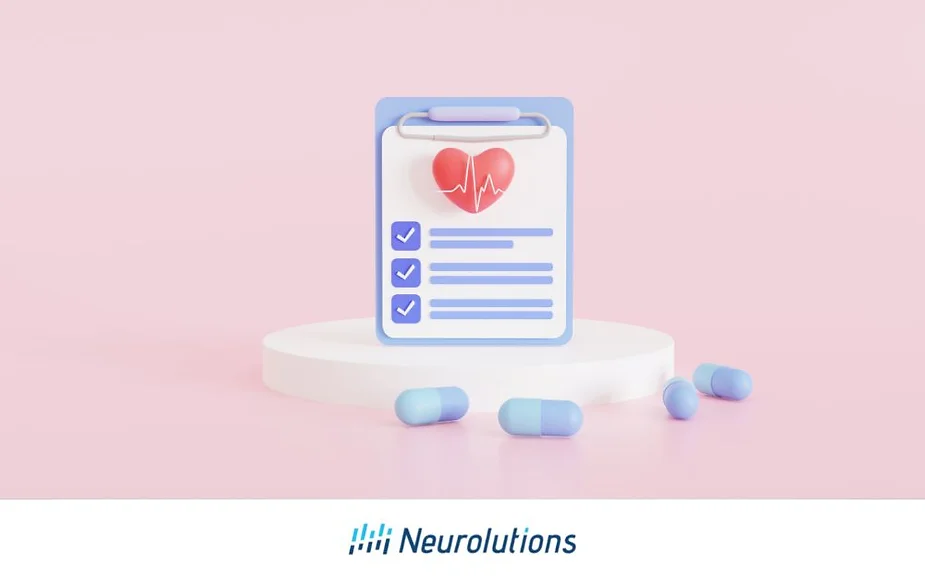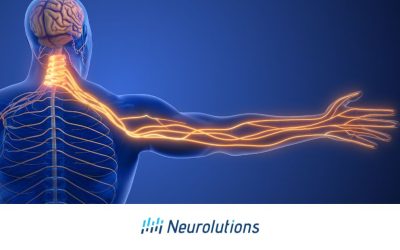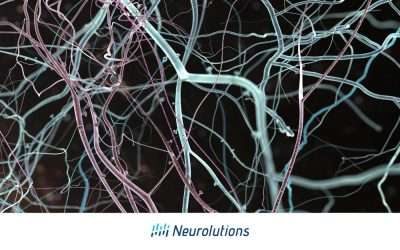An Overview of the Cardiovascular System:
Our cardiovascular system consists of the heart, blood, and blood vessels (i.e. arteries, veins, and capillaries). The heart is a central organ in the system and is required to maintain life. About the size of a fist, the heart beats approximately 100,000 times a day without us having to have any awareness at all. An adult heart pumps up to 2,000 gallons of blood saturated with oxygen and nutrients throughout our body every day. Another fascinating fact is that if all the blood vessels were to connect end to end, it is long enough to circle the world more than twice. That is 60,000 miles of arteries, veins, and capillaries of blood circulating throughout your body!
The cardiovascular system serves several purposes for supporting life, including:
- Provides oxygen and removes carbon dioxide to organs and tissues
- Exchanges nutrients between cells
- Removes the waste products from nutrients
- Protects the body against infections and disease
- Forms clots after an injury to stop bleeding
As expected, there are a number of health problems that can occur with the structures and functions of the cardiovascular system that may put you at risk for heart attack, heart failure, strokes, high blood pressure, and other diseases.
What are Cardiovascular Diseases?
Cardiovascular, or heart disease, refers to groups of damaging health conditions that affect the heart or blood vessels. Heart disease is the number 1 killer and a leading cause of death in the United States since 1950. (1) Heart disease is considered a stroke risk factor for stroke. This article provides an overview of cardiovascular diseases and their connection to stroke, risk factors, the impact it has on our lives, and prevention.
The Different Types of Cardiovascular Diseases & What Causes Them
There are many different types of cardiovascular diseases. This article provides an overview of some of the more common types, what causes them, and their relationship to stroke.
Heart Attack
Commonly referred to as a heart attack, myocardial infarctions (MI) occur when there is a blockage or damage to blood flow to the heart. Lack of oxygen will send the cardiopulmonary system into distress, but it can also trigger a stroke. The CDC reported in 2021 that heart attack occurs every 34 seconds in the United States.
High Blood Pressure
Known as the “silent killer” because it may go undiagnosed and can be asymptomatic, hypertension (HTN) is a common condition, affecting nearly half of adults in the United States (116 million). New guidelines define hypertension as a systolic blood pressure consistently 130mmHg or higher or a diastolic blood pressure greater than 80 mmHg. (2, 3). Understanding how to manage your blood pressure, especially after a stroke is important to living a healthy lifestyle.
Congestive Heart Failure (CHF)
Congestive heart failure is considered a progressive condition and may cause a lack of blood flow to the brain because of impaired function of the organs and tissues. The body is susceptible to the accumulated fluid in internal organs (e.g. lungs) as well as peripheral extremities (e.g. hands and feet). Many individuals suffer from shortness of breath, but there is also a correlation to a decline in cognition (i.e. decreased attention and capacity for new learning). (4)
Coronary Artery Disease (CAD)
Coronary artery disease is attributed to plaque that builds up on the lining of the arteries and will cause the narrowing of the walls. The hardening of the artery walls is called atherosclerosis. CAD and atherosclerosis increase the risk of high blood pressure, stress on the vascular system, and the likelihood of the development of blood clots. All of these problems can lead to stroke.
Chronic Obstructive Pulmonary Disease (COPD)
COPD is a generalized term for a group of lung disorders that are often tied to heart conditions. The strain on the respiratory system is expected due to progressive inflammation. It is a chronic and potentially life-threatening condition. The risk for stroke is greater after an exacerbation of COPD. (5)
Stroke
A stroke, or brain attack, has a close relationship to cardiovascular disease as noted in all of the conditions mentioned above. Our vascular systems are interconnected with our central nervous system and brain. When one of the systems experiences a disruption, the other system will be disrupted as well. (6)
Common Risk Factors for Cardiovascular Diseases & How to Reduce Them
Risk factors refer to conditions that increase the risk of developing a condition. When a risk factor is considered modifiable, it means that it can be changed. Non-modifiable risk factors mean it can not be changed. These risk factors include age, gender, or genetics.
It is very important to carefully understand modifiable risk factors related to cardiovascular disease so you can make adjustments to your daily life. Everyone has some level of risk for developing cardiovascular disease, but it is up to you to take responsibility and make specific lifestyle changes to reduce cardiovascular risks.
Modifiable Risk Factors for Cardiovascular Disease
High Blood Pressure
There is strong evidence that high blood pressure, or hypertension (HTN), can cause a cardiac-related disease or an acute cardiac event like stroke or heart attack- two leading causes of death for Americans. (7)
Smoking
Smoking and tobacco use has direct vascular consequences and is considered a significant risk factor. It is the leading cause of preventable death in the United States. One out of five deaths traces back to smoking according to the CDC. (8, 9)
Obesity
Chronic obesity is considered a global epidemic and has a significant impact on our health, including the development of cardiovascular diseases. Next to smoking, obesity is the second leading cause of preventable death in the United States. (10)
High Cholesterol
High cholesterol increases the risk of heart attack and stroke. While you do need some amount of good cholesterol to maintain optimal health, having high cholesterol levels can lead to the hardening of the arteries and be a precursor to cardiovascular and neurological diseases. Cholesterol is a waxy substance that can build up on artery walls, forming hard structures known as plaque.
Diabetes
Both Type 1 and Type 2 diabetes are conditions in which increased sugar builds up in the bloodstream. Those living with diabetes are twice as likely to have a stroke or a cardiovascular disease compared with someone who does not have diabetes. Risk increases the longer you have diabetes. (11)
Sedentary Lifestyle
Inactivity, lack of exercise, and sedentary lifestyles are considered modifiable risk factors worldwide for diseases related to cardiovascular problems and all-cause mortality. (12) Excessive sitting in front of the TV, computer desk, and riding in the car all are examples of inactive, sedentary behaviors.
Alcohol and Drug Abuse
Alcohol and drug abuse are common among those with heart disease. (13) There is an association between heart attacks, congestive heart failure, and atrial fibrillation. (14)
Diet
An unhealthy diet with an imbalance of nourishing, whole foods, and macronutrients needed in the body is correlated with cardiovascular diseases and associated conditions, such as high cholesterol, diabetes, and obesity. (15)
The Impact Cardiovascular Disease has on Daily Activities
Every condition related to cardiovascular disease has the potential to impact daily activities. Although symptoms, severity, age, and other health conditions may vary from person to person, cardiovascular disease presents as either a chronic condition or sudden health crisis which can limit function, reduce independence, and decrease quality of life.
Here are some examples of how daily activities can be affected by cardiovascular disease:
Self Care
Dressing, bathing, and even toileting can be interrupted because of symptoms that may accompany the cardiovascular disease, such as shortness of breath and decreased energy. Some heart surgeries and procedures may have precautions that need to be taken because of trauma incurred over the sternum, the need to not overstress the heart and associated structures from physical exertion, and instructions not to push/pull or reach overhead during self-care.
Mobility
Functional mobility (walking, stair climbing, getting up and down) is going to be more difficult with symptomatic cardiac conditions. Shortness of breath will affect how long a person can continuously walk in their community and may limit participation in walking-related activities to various degrees. Functional mobility will be hindered when the individual requires an oxygen tank due to the need to either pull it or wear a cylinder on their body.
Rest and Sleep
It is not uncommon to experience trouble breathing while sleeping if the individual has cardiovascular disease. If pulmonary conditions accompany the heart condition, they may require a CPAP machine while sleeping to help with their airway. Coughing episodes may occur when lying on the back during rest and sleep. Overall, if the individual cannot easily relax because of distress, poor sleep is expected and will negatively affect their waking hours from interrupted or lack of continuous sleep.
Travel
Driving, flying, and any operation of a moving object (i.e. bicycle) may be limited because of reduced stamina. If the individual has pain or is in distress, this could quickly impair safety during travel. Flying or prolonged sitting during travel can also increase pitting edema in the legs if this is a symptom of cardiac insufficiency. Even if the individual with cardiovascular disease is a passenger on a flight or vehicle, tolerance to these activities may be limited or prevented. Seatbelts over the chest may also have to be modified for comfort or out of precautions due a heart surgery.
Activities Of Daily Living
Due to many of the reasons mentioned above, shopping, work making meals, home chores, and community tasks (e.g. church, doctor appointments, dining out) may have limited engagement.
Health Management
Dietary plans and exercise routines must follow the recommended management care plan aligned with their respective heart condition.
Social Interactions
The individual may not feel like going out with friends and family as they used to when experiencing trouble with their heart and cardiovascular system. In severe cases, the individual may be limited to visitations in their own home and not be able to attend enjoyable events that connect them to other people. This has the potential to cause social isolation. Social isolation is detrimental to health and well-being and is even associated with earlier morbidity.
Mental Health
Cardiac conditions can correlate with short-term or long-term disruptions to mental health, such as depression and anxiety. Loss of confidence, reduced independence, stress, pain, and disappointment attributed to forced lifestyle changes can negatively affect one’s mental health and mood.
How to Reduce the Risks and Prevent Cardiovascular Disease
Cardiovascular disease is largely preventable. Don’t be afraid to seek professional help. Here are the 10 WAYS to impact your health by making some small changes that lead to big results:
1. Routinely Monitor and Manage Your Blood Pressure
Managing your blood pressure takes some work, but there are steps you can take to lower high numbers. Controlling blood pressure involves exercising more, reducing stress, eating a balanced diet with foods known to reduce blood pressure, reducing alcohol, limiting salt intake, and trying to get a good night’s sleep. Buy a blood pressure cuff and take daily recordings so you understand the cause and effect of the changes you make over time.
2. Stop Smoking.
Consider nicotine replacement therapy. Give 10 minutes for cravings to pass. Exercise to curb the urge to smoke. Recruit a support system to help you quit.
3. Lose Weight and Strive For Healthy Body Mass Index (BMI)
Weight loss is a billion-dollar business. It is not easy for everyone to lose weight, but having the discipline to stick with a carefully designed plan that includes better nutrition, more exercise/activity, and lower stress will help. Because everybody is different, you may need to consult with nutrition experts or personal trainers to design a program specific to you for long-term success.
4. Take Steps To Lower Your Cholesterol.
Eating foods or taking supplements with soluble fiber is known to lower cholesterol (e.g. certain cereals with oats, oatmeal, fish, apples, brussel sprouts). Drinking plenty of water and getting regular exercise can also reduce cholesterol.
5. Lower Risk Factors That Influence Likelihood Of Developing Type II Diabetes (Non-Genetic)
The theme for reducing the chance of developing type II diabetes is much the same as how to lower cholesterol and lose weight: exercise more, eat more fiber, choose a diet that is lower in fat unless you have been told to reduce carbohydrate intake, reduce sugar consumption, and drink more water
6. Move More
Exercising regularly and finding ways to move more throughout your day will benefit your body, brain, and health tremendously. It will help you lose weight, have an improved mood, may help you make better food choices or eat less, and could curb smoking cravings. Set a timer or use an app/watch that tells you if you have been sitting too long and can provide an alert to move.
7. Limit and/or Discontinue Alcohol/Drugs
You may need professional help for this if you have a problem with overconsumption or if it is causing functional challenges in your everyday life. However, you can start by exploring your relationship with alcohol and drugs to try to get to the root of the problem. Involve your loved ones by talking about it so they can be a support system for you when you have the urge. Swap alcohol and drugs for something else you enjoy that could positively affect your health.
8. Improve Your Diet and Change Behaviors Associated With Meals/Eating
Eat when you are hungry and stop when you feel satisfied. In other words, listen to your body. Eat out less and cook at home more often. Try to avoid shopping when you are hungry. Drink enough water to fill up your stomach. Eat a balanced diet, but consider talking to your doctor or a nutritionist to come up with a plan. Many apps on your smartphone have programs (free or small fee) that will customize a program to keep track of your food intake and help set other goals that correlate with health and wellness. Keep healthy snacks around the house rather than foods that are full of sugar and high in fat/cholesterol.
9. Stay Compliant with Prescribed Medication
Medication compliance is a part of the management of cardiovascular diseases. Failure to be compliant can lead to exacerbations, hospitalizations, a number of other health-related consequences, and potentially death. Take your medication as prescribed (dose, time of day, etc). Set alarm reminders or associate the medication with a routine (i.e. meals, brushing your teeth). Read medication warnings closely, and talk to your pharmacist so you can learn about the prescribed drug. Make sure to alert your doctor if you are having any concerning symptoms.
10. Get Regular Health Screenings
Regular health screenings, which may include wellness exams, routine diagnostic testing, blood work/labs, work-related screenings for insurance, and community health screening events (sometimes free or reduced cost). Health screenings are truly one of the most important things you can do for your health. Be honest and open with the medical professional about your lifestyle in surveys and in verbal dialogue so they can come to accurate conclusions to guide a care plan that is going to help you achieve optimal health and wellness. It is always better to prevent it than to wait until it is too late.
It is important to be familiar with all risk factors that tie into cardiovascular conditions and also know how to prevent stroke and heart disease. If you have specific questions and are in need of a customized plan, please speak to your physician for guidance.
References
- CDC
- Centers for Disease Control and Prevention, National Center for Health Statistics. About Multiple Cause of Death, 1999–2020. CDC WONDER Online Database website. Atlanta, GA: Centers for Disease Control and Prevention; 2022.
- Centers for Disease Control and Prevention. Hypertension Cascade: Hypertension Prevalence, Treatment and Control Estimates Among U.S. Adults Aged 18 Years and Older Applying the Criteria from the American College of Cardiology and American Heart Association’s 2017 Hypertension Guideline—NHANES 2015–2018. Atlanta, GA: U.S. Department of Health and Human Services; 2021.
- Leto L, Feola M. Cognitive impairment in heart failure patients. J Geriatr Cardiol. 2014 Dec;11(4):316-28. doi: 10.11909/j.issn.1671-5411.2014.04.007. PMID: 25593581; PMCID: PMC4294149.
- Szylińska A, Kotfis K, Bott-Olejnik M, Wańkowicz P, Rotter I. Post-Stroke Outcomes of Patients with Chronic Obstructive Pulmonary Disease. Brain Sciences. 2022
- Virani SS, Alonso A, Aparicio HJ, Benjamin EJ, Bittencourt MS, Callaway CW, Carson AP, Chamberlain AM, Cheng S, Delling FN, Elkind MSV, Evenson KR, Ferguson JF, Gupta DK, Khan SS, Kissela BM, Knutson KL, Lee CD, Lewis TT, Liu J, Loop MS, Lutsey PL, Ma J, Mackey J, Martin SS, Matchar DB, Mussolino ME, Navaneethan SD, Perak AM, Roth GA, Samad Z, Satou GM, Schroeder EB, Shah SH, Shay CM, Stokes A, VanWagner LB, Wang NY, Tsao CW; American Heart Association Council on Epidemiology and Prevention Statistics Committee and Stroke Statistics Subcommittee. Heart Disease and Stroke Statistics-2021 Update: A Report From the American Heart Association. Circulation. 2021 Feb 23;143(8):e254-e743. doi: 10.1161/CIR.0000000000000950. Epub 2021 Jan 27. PMID: 33501848.
- Fuchs FD, Whelton PK. High Blood Pressure and Cardiovascular Disease. Hypertension. 2020 Feb;75(2):285-292. doi: 10.1161/HYPERTENSIONAHA.119.14240. Epub 2019 Dec 23. PMID: 31865786. Kochanek KD, Murphy SL, Xu J, Arias E. Deaths: Final Data for 2017 [PDF – 1.76M]. National Vital Statistics Reports, 68(9). Hyattsville, MD: National Center for Health Statistics; 2019.
- Gallucci G, Tartarone A, Lerose R, Lalinga AV, Capobianco AM. Cardiovascular risk of smoking and benefits of smoking cessation. J Thorac Dis. 2020 Jul;12(7):3866-3876. doi: 10.21037/jtd.2020.02.47. PMID: 32802468; PMCID: PMC7399440.
- CDC and Smoking
- Hurt RT, Frazier TH, McClave SA, Kaplan LM. Obesity epidemic: overview, pathophysiology, and the intensive care unit conundrum. JPEN J Parenter Enteral Nutr. 2011 Sep;35(5 Suppl):4S-13S. doi: 10.1177/0148607111415110. PMID: 21881014.
- Chen R, Ovbiagele B, Feng W. Diabetes and Stroke: Epidemiology, Pathophysiology, Pharmaceuticals and Outcomes. Am J Med Sci. 2016 Apr;351(4):380-6. doi: 10.1016/j.amjms.2016.01.011. PMID: 27079344; PMCID: PMC5298897.
- Lavie CJ, Ozemek C, Carbone S, Katzmarzyk PT, Blair SN. Sedentary Behavior, Exercise, and Cardiovascular Health. Circ Res. 2019 Mar;124(5):799-815. doi: 10.1161/CIRCRESAHA.118.312669. PMID: 30817262.
- Grubb AF, Greene SJ, Fudim M, Dewald T, Mentz RJ. Drugs of Abuse and Heart Failure. J Card Fail. 2021 Nov;27(11):1260-1275. doi: 10.1016/j.cardfail.2021.05.023. Epub 2021 Jun 13. PMID: 34133967.
- Whitman IR, Agarwal V, Nah G, Dukes JW, Vittinghoff E, Dewland TA, Marcus GM. Alcohol Abuse and Cardiac Disease. J Am Coll Cardiol. 2017 Jan 3;69(1):13-24. doi: 10.1016/j.jacc.2016.10.048. PMID: 28057245; PMCID: PMC5226115.
- Chareonrungrueangchai K, Wongkawinwoot K, Anothaisintawee T, Reutrakul S. Dietary Factors and Risks of Cardiovascular Diseases: An Umbrella Review. Nutrients. 2020 Apr 15;12(4):1088. doi: 10.3390/nu12041088. PMID: 32326404; PMCID: PMC7231110.





